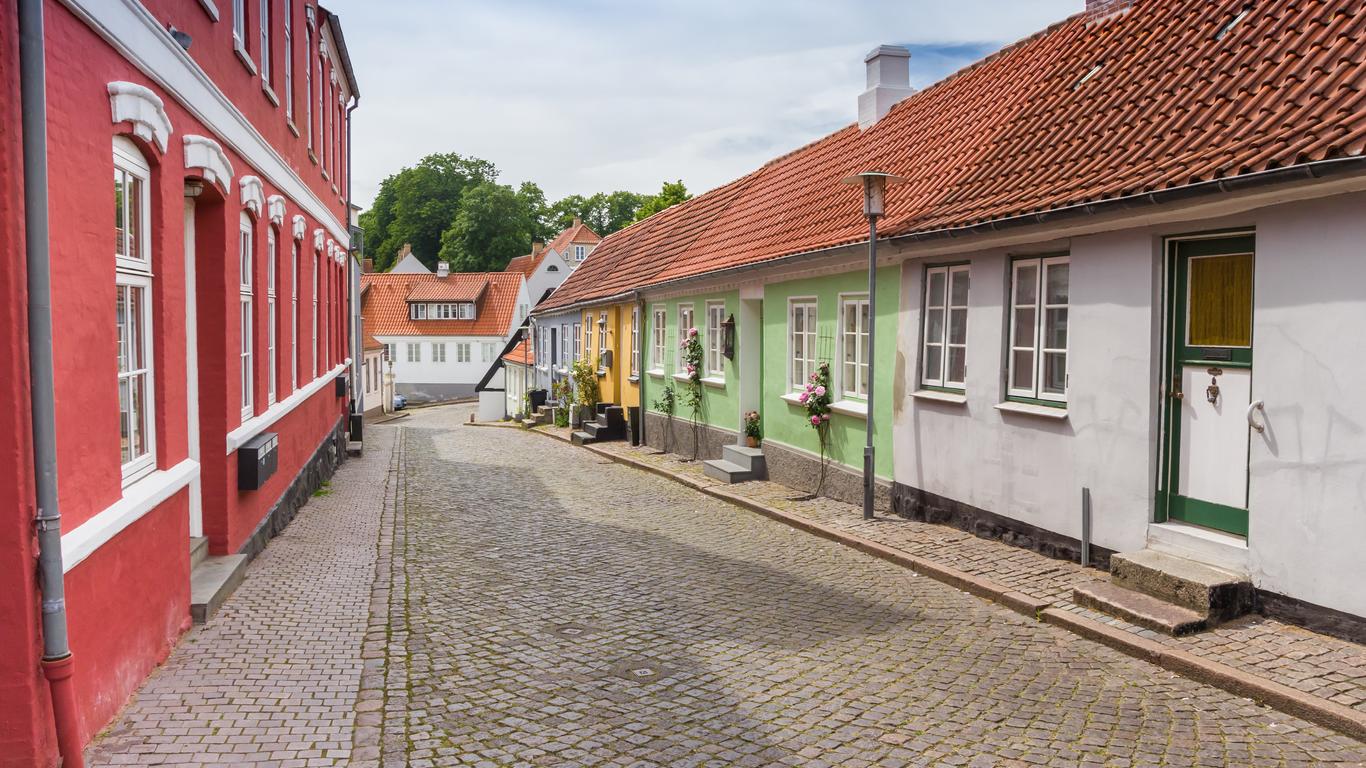Founded by the Vikings in the 12th century, Haderslev is a historic trade hub in Southern Jutland. It was an important centre for the Reformation in Scandinavia and later became part of the German Empire before being returned to Denmark with the signing of the 1920 Schleswig Plebiscite.
Things to do in Haderslev
In the heart of Haderslev is the Haderslev Dampark, which was established in 1958 around a central pond. It features leafy walking trails, landscaped flower beds and a rose garden, as well as three children’s playgrounds and a memorial dedicated to the fallen soldiers of World War II. Wander between the sculptural artwork featured within the park or rent a pedal boat to explore from the water.
One of the town’s most iconic landmarks is the 13th-century Haderslev Cathedral, which combines Gothic, Baroque and Romanesque architectural elements. It features a high altar designed by Lønborg Jensen and a 15th-century baptismal font, as well as an organ crafted by Peter Carstensen in the 1650s. Also of note is the whitewashed Sankt Severin Church, which is believed to date back to the 1100s.
In the east of Haderslev is the Sønderjylland Archaeology Museum, where centuries-old findings from across Southern Jutland are on display. See Denmark’s oldest tomb and remains from the historic Hansborg Castle while learning about the rich history of Haderslev as a merchant’s town. Surrounding the museum are several old farmhouses and buildings from across the region, including a rare post mill.
Getting around Haderslev
Haderslev is a 30-minute drive from Kolding and 1.5 hours from Aarhus. Aarhus Airport is just under two hours away and has flights to destinations across Europe. Buses are the main means of getting to and around Haderslev while the centre of town is compact enough to explore on foot.





